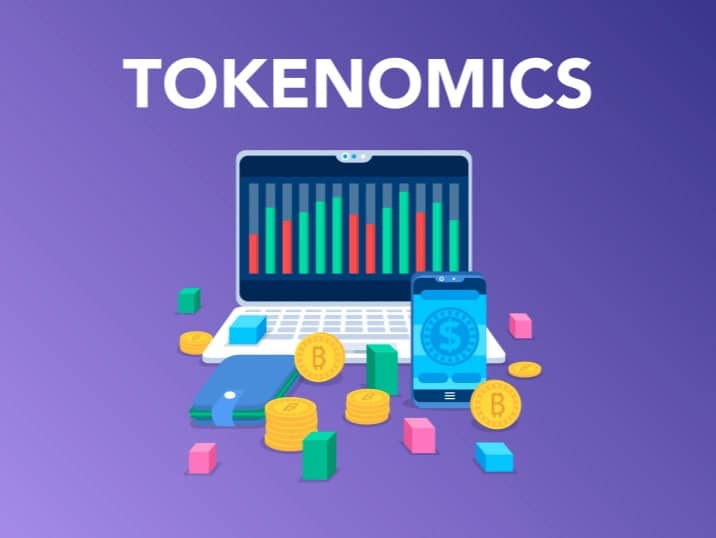위키 구독하기
Share wiki
Bookmark
Tokenomics
에이전트 토큰화 플랫폼 (ATP):에이전트 개발 키트(ADK)로 자율 에이전트 구축
Tokenomics
**토큰 경제학(Tokenomics)**은 암호화폐가 더 넓은 생태계 내에서 어떻게 작동하는지에 대한 연구입니다. 여기에는 토큰 분배뿐만 아니라 네트워크 내에서 긍정적인 행동을 유도하는 데 사용할 수 있는 방법도 포함됩니다. 토큰 경제학은 토큰(token)과 경제학(economics)의 합성어입니다. 토큰 경제학은 사용자와 투자자가 특정 토큰을 채택하고 해당 토큰의 기반 프로젝트를 중심으로 생태계를 구축하도록 설득할 토큰의 특성을 의미합니다. [1][2]
Trivia
- 하버드 대학교 심리학자 B. F. 스키너(B. F. Skinner)는 1972년에 처음으로 토큰 경제(token economy)의 개념을 제시했습니다. 인식 가능한 가치의 단위를 제공하면 긍정적인 행동을 유도하고 그 반대의 경우도 마찬가지입니다.
- 토큰 경제학이라는 용어는 아직 널리 인정받지 못했습니다. 영어의 주요 권위로 널리 인정받는 옥스포드 영어 사전에도 아직 토큰 경제학에 대한 항목이 없습니다. [3]
소개
토큰 경제학은 본질적으로 중앙은행이 통화 정책으로 사용하는 것을 블록체인 네트워크에 적용한 것입니다. 토큰 경제학은 토큰 경제의 과학입니다. 여기에는 코인 생성, 관리, 그리고 때로는 네트워크에서 제거하는 모든 측면이 포함됩니다.
토큰 분배
프로젝트는 잠재적 사용자에게 코인을 분배할 수 있어야 합니다. 그렇지 않으면 네트워크는 존재할 수 있지만 아무도 사용할 수 없습니다. 이를 달성할 수 있는 여러 가지 방법이 있습니다. 네트워크는 검증자 또는 채굴자에게 새로 생성된 코인으로 보상합니다. 2017년에는 프로젝트에서 Initial Coin Offering (ICO)를 통해 잠재적 사용자에게 토큰 공급량의 일부를 판매했습니다.
다른 토큰은 특정 행동을 통해 사용자에게 분배됩니다. 예를 들어, Augur는 베팅 네트워크에서 사실을 확인하는 사람들에게 보상합니다.
가격 안정성
암호화폐는 변동성이 심한 것으로 악명이 높습니다. 이는 변동이 투기꾼(소매 투자자)을 유인하여 대량으로 매수 및 매도하여 네트워크가 제대로 작동하지 못하게 할 수 있기 때문입니다.
프로젝트는 공급 수준에 맞는 충분한 코인이 있도록 함으로써 이에 대처할 수 있습니다. 이는 코인의 안정적인 가격을 만드는 데 도움이 되어 사람들이 토큰을 의도된 목적으로 사용하도록 장려합니다. [4]
거버넌스
각 프로젝트의 창립 팀은 토큰이 생성되거나 ‘발행’되는 방식과 네트워크에 유입되고 유출되는 방식에 대한 규칙을 수립합니다. 프로젝트마다 접근 방식이 다릅니다.
일부 프로젝트에는 성장을 촉진하거나 시스템 유지를 위해 나중에 생태계에 추가할 수 있는 예비 토큰이 포함될 수 있습니다. Ripple(결제 프로토콜)이 좋은 예입니다.
다른 프로젝트는 네트워크 작동 방식에 대해 무관심한 접근 방식을 취합니다. 예를 들어, Augur의 개발자는 네트워크 운영에 어떠한 역할도 하지 않고 단지 인프라를 유지 관리할 뿐입니다. 일부 네트워크는 시장에서 코인의 가치를 조절하기 위해 토큰을 ‘소각’합니다. 소각은 아무도 주소를 모르는 지갑으로 통화를 보낼 때 발생합니다.
2020년에 yEarn Finance(YFI)의 설립자인 Andre Cronje는 Ethereum 커뮤니티의 개발자들 사이에서 공정 출시(fair launch) 개념을 유행시켰습니다. [5]
토큰으로서의 거버넌스
일부 네트워크는 사람들이 코인을 HODLing하는 것을 방지하고 네트워크가 설계된 대로 사용되지 못하게 하는 방법으로 토큰을 소유, 보유 및 사용하도록 유도합니다. 실제로 자신의 코인을 스테이킹하는 검증자에 의존하는 Proof-of-stake 시스템은 그들이 정직하고 공정하게 행동하도록 보장하는 데 도움이 됩니다. 규칙을 따르지 않으면 토큰이 몰수될 수 있습니다.
미래 적응
암호화폐 네트워크를 구축하는 대부분의 팀은 그 통치자가 되지 않습니다. 이러한 프로토콜의 개발자는 현재 구축하는 것이 미래에 반드시 작동하는 것은 아님을 알고 있습니다. 네트워크가 성장하고 성숙함에 따라 토큰이 관리되는 방식을 변경해야 할 수도 있습니다. 일부(모든 것은 아님)는 합의를 통해 네트워크 사용자가 생태계 내에서 토큰이 관리되는 방식을 효과적으로 변경할 수 있는 조항을 마련했습니다.
토큰 경제학의 예
비트코인
Satoshi Nakamoto는 블록 보상을 통해 꾸준한 토큰 흐름이 네트워크에 유입될 수 있도록 Bitcoin을 설계했습니다. ‘채굴자’가 블록을 성공적으로 검증한 후에는 새로 생성된 비트코인을 받습니다. 채굴자가 보상에 접근하려면 추가로 101개의 블록이 확인되어야 합니다. 이는 거래 검증을 계속하도록 유도합니다. 한 번에 너무 많은 비트코인이 네트워크에 유입되는 것을 막기 위해 검증된 블록마다 보상되는 토큰의 양은 시간이 지남에 따라 절반으로 줄어듭니다. 많은 암호화폐 애호가들은 비트코인의 시작을 최초의 공정 출시 프로젝트로 간주합니다.
이더리움
Ethereum은 2014년 ICO 당시 약 700만 개의 이더 토큰을 판매하여 주류 채택을 시작했습니다. 현재 이더에는 상한선이 없으므로 네트워크가 확장됨에 따라 토큰 공급량이 계속 증가할 수 있습니다. [6]
토큰 경제학의 중요성
Blockchain 기술을 통해 프로젝트는 마이크로 경제를 만들 수 있습니다. 자립적으로 운영되려면 생태계 내에서 토큰이 어떻게 작동해야 하는지 파악해야 합니다. 토큰에 관해서는 “모든 것에 적용되는 하나의 크기는 없다”는 태도를 취해야 합니다. 블록체인은 다양한 사용 사례와 구현을 가능하게 했습니다. 토큰 경제학을 통해 팀은 프로젝트가 달성하려는 목표에 맞는 새로운 모델을 만들거나 기존 모델을 조정할 수 있습니다. 이는 제대로 실행되면 고성능이고 안정적인 플랫폼을 만들 수 있습니다.
작동하지 않는 모델도 많이 있습니다. 이러한 프로젝트는 사라질 것입니다. 그러나 작동하는 프로젝트는 앞으로 나올 새로운 프로젝트에 영감을 주고 안내할 것입니다.
잘못된 내용이 있나요?
